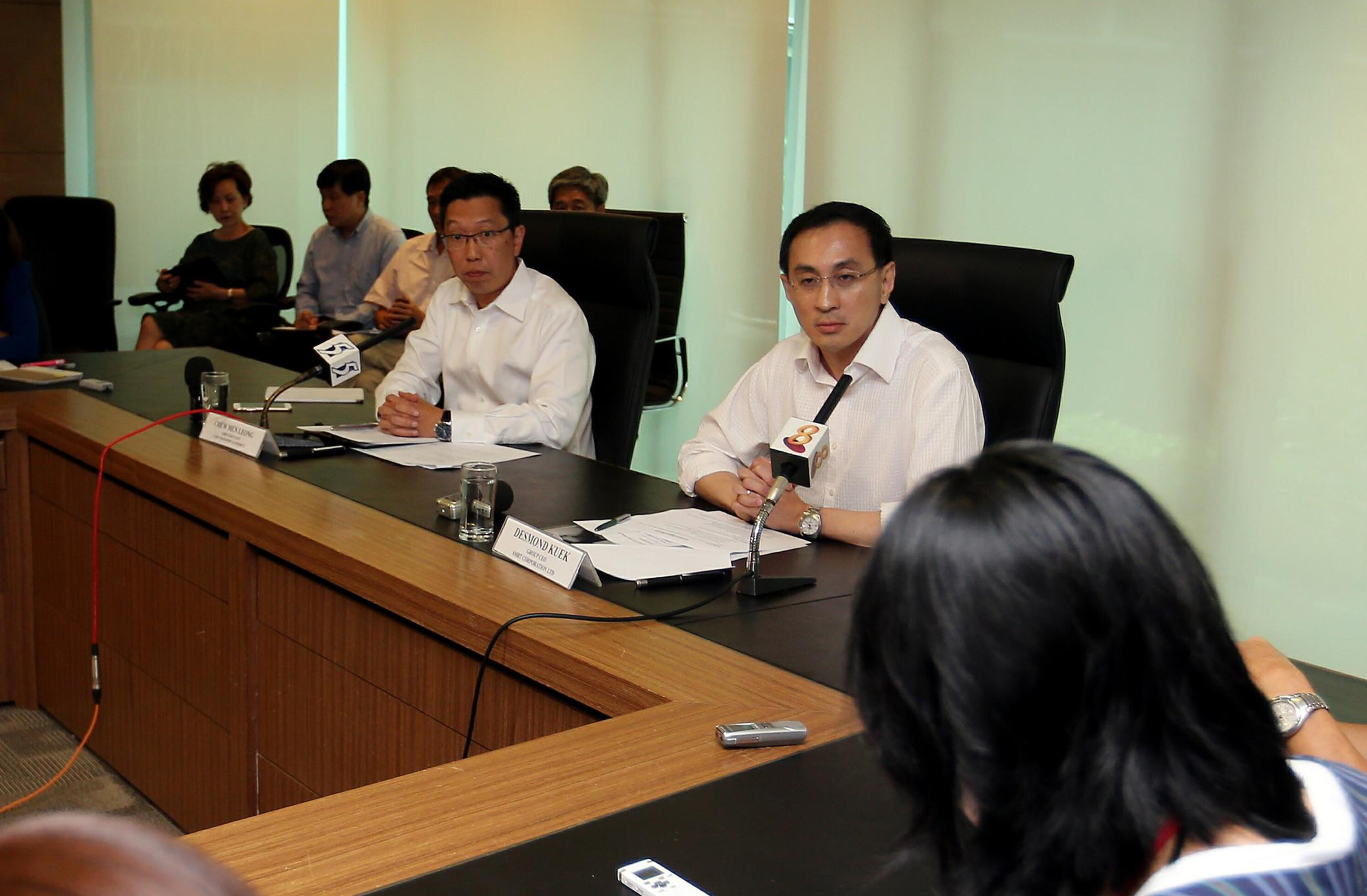SMRT points to 3 likely causes of Tuesday's big breakdown
Checks are ongoing to pin down causes, with trains back in service yesterday
Sign up now: Get ST's newsletters delivered to your inbox

MR DESMOND KUEK, SMRT chief executive (right, with LTA chief executive Chew Men Leong at the press conference yesterday)
ST PHOTO: WONG KWAI CHOW
Christopher Tan Senior Transport Correspondent, Christopher Tan
Follow topic:
Rail operator SMRT Corp has identified three possible causes of Tuesday's unprecedented breakdown on the North-South and East-West lines: worn cable insulation, tunnel water leakage, and a glitch in a power substation.
It pointed to these possible causes at a media conference yesterday but said it was "not 100 per cent sure" that they led to the breakdown, and that it was continuing investigations to determine if there are other causes.
Yesterday, trains ran smoothly during the morning peak hour, after these flaws were rectified. Trains ran normally during the evening rush hour as well.
The Land Transport Authority said it did not observe any power trips during the evening peak, and that system checks would continue after operating hours. It said faults may still occur from time to time, and advised commuters to check for updates before their trips.
Both SMRT chief executive Desmond Kuek and LTA chief executive Chew Men Leong apologised for the disruption, which affected over 250,000 commuters. Said Mr Kuek: "It is a stark reminder that the journey to bringing about a much higher order of reliability and assurance is a difficult one, but we are committed to doing so ."
In a Facebook post yesterday, Prime Minister Lee Hsien Loong expressed his concern, adding that he had visited the LTA operations centre to be briefed on the situation.
Noting that the root cause of the power trips had yet to be identified, he said: "Hope we identify and resolve the faults quickly, to prevent further inconvenience to commuters."
SMRT, which has been in the spotlight since two major disruptions in 2011 triggered a costly public inquiry, said it found two power cables at Bishan station with "slightly worn" insulation.
It also found a "no voltage relay" (a type of safety switch) at a substation in Kranji that was faulty. And in a tunnel at Tanjong Pagar station, there was water leakage close to a power-supplying third rail.
These flaws, it said, could have sparked electrical anomalies that led to power trips across both lines.
SMRT could not find any flaw in a new train that was suspected initially of contributing to the shutdown, but has taken it out of service to do further checks.
Asked if these potential flaws would have been picked up during routine maintenance checks, SMRT Trains managing director Lee Ling Wee said: "Our routine checks do cover these things, but they are not done every day, they are done six-monthly or annually."
He acknowledged that as a system ages, the frequency of checks needs to rise, adding SMRT was putting in place "conditioning monitoring systems" that will help it do this, but that it takes time to do so.
Such systems are widely used in the power generation, wafer-fab and other high-tech industries to detect changes that might indicate an imminent component failure.
On how a power anomaly at one spot in the system could trigger multiple power trips anywhere in the network, the LTA said it was designed in such a way for safety.
But LTA senior group director of rail Sim Wee Meng said the authority is exploring newer systems that can isolate trips. They are being tested on the Downtown Line, and are likely to be rolled out to other lines if deemed good, he said.
Mr Kuek said SMRT was doing all it could to make the network more reliable, but priority had to be given to multi-year programmes such as fixing the third rail and renewing the signalling system.
SEE TOP OF THE NEWS

